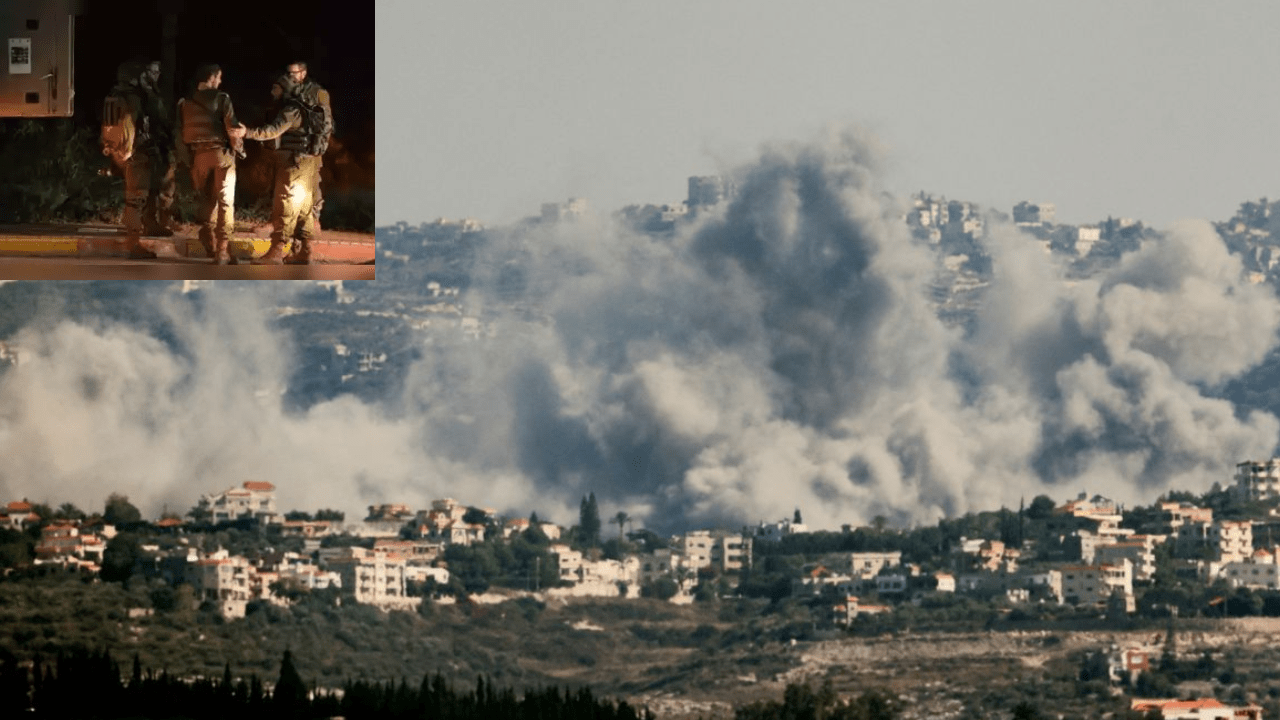Recent Israeli airstrike eliminated Hezbollah drone commander Muhammad Hussein Srour and the rising tensions along the Israel-Lebanon tensions in border.

The Israeli Air Force (IAF) conducted a precise airstrike in Beirut, leading to the elimination of Muhammad Hussein Srour, the aerial commander of Hezbollah. Srour, who was a significant figure in Hezbollah’s military operations, was reportedly responsible for orchestrating drone attacks and overseeing unmanned aerial vehicle (UAV) production. His death has triggered concerns about further escalation in the volatile Israel-Lebanon border region, and the United States has since urged for a 21-day ceasefire to avert a larger conflict.
Who Was Muhammad Hussein Srour?
Muhammad Hussein Srour was a key player in Hezbollah’s military wing, particularly in the area of aerial warfare. He played a vital role in developing and coordinating Hezbollah’s drone operations, which have been used in various attacks against Israeli targets. Srour was also involved in the production of UAVs in southern Lebanon, a process that took place alarmingly close to civilian infrastructure. His expertise in drone technology enabled Hezbollah to launch sophisticated aerial attacks, especially during recent conflicts such as the “Iron Swords” operation, where UAVs were deployed in coordination with other terror activities.
The IDF, in a statement on the social media platform X (formerly Twitter), confirmed the successful operation, announcing that the “Commander of Hezbollah’s Aerial Command, Muhammad Hussein Srour, has been eliminated in a precise IAF strike.” This high-profile assassination highlights Israel’s ongoing strategy to target key Hezbollah leaders responsible for terror activities against the nation.
Hezbollah’s Drone Capabilities and Their Impact
Hezbollah has developed a robust drone capability in recent years, largely due to the efforts of commanders like Srour. The organization has used drones not only for reconnaissance but also for offensive operations, carrying explosives and targeting military and civilian sites. The rise of Hezbollah’s drone warfare has raised significant concerns in Israel, as these UAVs have proven to be difficult to detect and intercept, making them an effective tool in Hezbollah’s arsenal.
The danger posed by Hezbollah’s drone program extends beyond military engagements. Many of the UAV production sites are located near civilian areas, primarily in southern Lebanon and Beirut, posing a direct threat to non-combatants. This strategy of embedding military infrastructure in civilian regions has drawn international criticism, as it complicates Israel’s counter-terrorism efforts while increasing the risk of civilian casualties.
Israeli Airstrike and Rising Tensions Along the Israel-Lebanon Border
The elimination of Srour comes at a time of heightened tension along the Israel-Lebanon border. Since the October 7, 2023, attack by Hamas on Israeli civilians, Hezbollah has intensified its rocket attacks on Israel, further straining the already fragile relationship between the two nations. These attacks have prompted strong military responses from Israel, which continues to defend its territory from Hezbollah’s aggression.
The conflict has the potential to spiral into a broader regional war, a scenario that both Israel and Lebanon seek to avoid. The involvement of international powers, particularly the United States, highlights the gravity of the situation. U.S. Secretary of Defense Lloyd J. Austin III has called for an immediate 21-day ceasefire between Israel and Hezbollah to prevent further escalation. In his statement, Austin emphasized the need for de-escalation while affirming Israel’s right to self-defense. He also warned that the ongoing conflict could lead to catastrophic consequences for both countries if left unchecked.
The Call for a Ceasefire and Its Implications
The proposed 21-day ceasefire by the United States is seen as a necessary step toward preventing a full-scale war between Israel and Hezbollah. The ceasefire would not only allow for a temporary halt in hostilities but also create a window for diplomatic negotiations, particularly in Gaza, where the situation remains volatile. Washington’s call for restraint underscores the global concern over the potential fallout from continued military exchanges in the region.
A ceasefire would also give the international community time to address the broader implications of Hezbollah’s drone program and its placement of military assets near civilian areas. The use of civilians as shields in warfare has long been condemned, and addressing this tactic is crucial for long-term peace in the region.
The Path Forward
The death of Muhammad Hussein Srour marks a significant blow to Hezbollah’s aerial operations, but it is unlikely to quell the ongoing conflict between Israel and Hezbollah. As tensions remain high, the international community, led by the United States, is working to prevent further escalation. The proposed ceasefire offers a glimmer of hope, though it remains to be seen whether all parties will adhere to it.
Israel’s defense strategy continues to focus on neutralizing key figures within Hezbollah’s military hierarchy, while Hezbollah is expected to retaliate for the loss of its drone commander. As both sides prepare for potential future confrontations, diplomatic efforts will play a crucial role in determining whether the region can avoid another devastating war.
Read Next:

The Psychology of Love: Why Valentines Day Matters More Epic Than You Think
Discover the psychology of love and why Valentines Day is more important than you think. Learn how love impacts the brain, strengthens relationships, and boosts

Premier League Highlights: Arsenal Humiliate Man City 5-1, Spurs and Palace Secure Crucial Wins
Arsenal demolished Manchester City 5-1 in a statement premier league highlights win, reigniting their title hopes. Meanwhile, Crystal Palace stunned Man United 2-0, and Tottenham

How Budget 2025 Impacts the Indian Middle-Class: Major Tax Benefits and Glaring Omissions
Budget 2025 offers major tax relief to the middle class, including zero tax on incomes up to ₹12 lakh. However, it misses out on incentives

Degrees vs Employability: Why “Highly Qualified Degree Holders” Struggle to Find Jobs While “Less Qualified Individuals” Get Hired Faster!
Many highly qualified individuals struggle to secure jobs, while less qualified candidates get hired quickly. This Degrees vs Employability paradox is caused by employer preferences,

The Power of Mindset: Why Looking Poor Doesn’t Make You Poor, but Thinking Poor Does!
Discover why looking poor doesn’t define your wealth but thinking poor does. Learn the power of mindset and how a growth-oriented mindset can lead to

Overthinking: How It’s Damaging Today’s Youth – Causes and Cure in 2025
Understanding how overthinking is silently damaging today’s youth, from its causes rooted in societal pressure and social media to its long-term effects on mental health.
